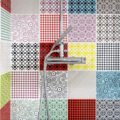In this strange winter, what will the weather be like on the days traditionally considered the coldest of the year? Here is what popular beliefs say. And, speaking of beliefs, February 2nd is Candlemas Day, with its related meteorological rhyme.
The concept of “blackbird days” is rooted in popular tradition but has no scientific basis and has little to do with the worrying context of climate change. Indeed, if climate change is characterized by an increase in long-term global average temperatures, this does not imply that every day or season must be warmer. Climate change may lead to more intense and unpredictable weather events, including cold extremes such as excessive heat waves. The tradition of “blackbird days” is linked to the period of the end of January, in particular from 29 to 31 January and states that during these days the cold reaches its peak.
The origin of the term “days of the blackbird” is uncertain, but it is believed to be connected to the legend of a blackbird who took refuge in a stove to seek shelter from the intense cold and, white as it was, came out black and black, covered as it was of ash and soot.
Pur ritenuti i giorni più gelidi dell’anno ai tempi del cambiamento climatico, anche le tradizioni più solide potrebbero essere destinate a sgretolarsi poiché sembra proprio che sarà l’anticiclone africano a farla da padrone in questo fine gennaio.
We still like to think that if the temperatures are cold during the blackbird days, the following spring will be pleasant, but if they are mild, the spring season will be late in arriving.










